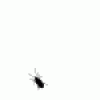Hi @Trigger, I take it you have a No 1 Mk III SMLE? But a New Old Stock points more to a LE No 4.
Those venerable, ugly war horses are getting popular again, can't for my life think why that might be...
Go for the new old stock is what I'd do, but your woodworking skills may be supreme compared to mine. BTW, who makes the repro stocks, without a trigger guard/magazine plate cutout?
No right answers re bedding, multitude of ways to do it, but I assume you want to just set it up milspec.
First read this entertaining article: Chasing Lee Enfield Accuracy - All About Enfields
One aspect important to understand is that the "draws" below the receiver are NOT "recoil lugs". Consider that the receiver is after all 100% connected to the wrist and through the wrist to the butt stock. The draws are there to connect with the forestock in its function as an elaborate barrel harmonics-dampener, specifically the middle ring contact and the front end spring plunger up-pressure point (both devices absent in the No 4 rifles, which just have simple front end up pressure contact). For that reason, as long as the receiver/draws/forestock are well connected you can safely leave an air gap between the wrist metal and the rear of the forend wood, which also helps disassembly and reassembly.
I would use bedding compound to bed the draws, the receiver and the knox form, good diagrams in the link above.
Peter Laidler (THE authority on how to set the LE up milspec) wrote interesting article on how to set the trigger and this is a crucial article if you want to take on the repro stock without the base plate cutout. The trigger plate has a cylindrical spacer above it at front, through which passes the main screw. That spacer sets the space in the front. In reassembly, the trigger guard/plate is first attached with the screw at the rifle wrist, and then swung up and tightened with the main screw. That last tightening of the main screw should slightly compress the front end wood above the trigger. Just. And if it is set right, you will also have a nice two-stage trigger pull, can't describe it as well as you'd instantly just "get it" from dry firing a well set up LE.
Article in two parts here:
Article One, the trigger pull off, by Peter Laidler
Article Two, the trigger pull off, by Peter Laidler
Index of Captain Peter Laidler's articles here
You can appreciate why in the No 4 Mk 2 upgrade they just hung the trigger from the steel and got away from this system which can be affected by shrinkage and expansion of the wood, but it is what it is. It is satisfying to get the trigger pull to work 'right'.
I did improve one of my LE triggers by adding an over-travel stop. Tied a cable tie around the back of the trigger guard, with the little lock block facing forward. I clipped small bits of the free end until I just had a crisp pull off of the trigger and no/negligible trigger over travel. A dab of epoxy steel made it go nowhere, but it will come off at a snip if I ever sell a rifle to a purist. I guarantee you, if he is a collector who likes to shoot his collectibles he will leave it on, knowing he can just remove it if he ever needs to.
Have fun!
Welcome guest, is this your first visit? Create Account now to join.
Welcome to the NZ Hunting and Shooting Forums.
Search Forums
User Tag List
Results 1 to 8 of 8
Thread: Fitting stock onto SMLE
Threaded View
-
27-04-2019, 03:38 PM #2
Last edited by Cordite; 27-04-2019 at 03:48 PM.
An itch ... is ... a desire to scratch
Similar Threads
-
New SMLE TAC
By FRST in forum Firearms, Optics and AccessoriesReplies: 12Last Post: 25-01-2018, 07:41 AM -
Shotgun Stock fitting service?
By Spanners in forum ShotgunningReplies: 1Last Post: 14-04-2012, 08:37 AM -
Shotgun Stock fitting service?
By Spanners in forum Firearms, Optics and AccessoriesReplies: 1Last Post: 14-04-2012, 08:37 AM
Tags for this Thread
Welcome to NZ Hunting and Shooting Forums! We see you're new here, or arn't logged in. Create an account, and Login for full access including our FREE BUY and SELL section Register NOW!!




 6Likes
6Likes
 LinkBack URL
LinkBack URL About LinkBacks
About LinkBacks




 Reply With Quote
Reply With Quote


Bookmarks